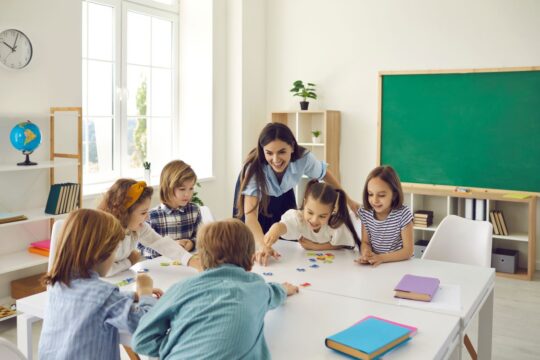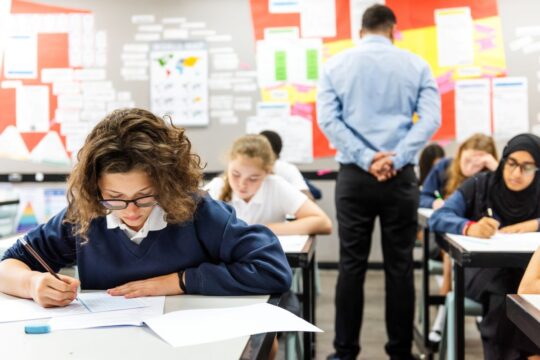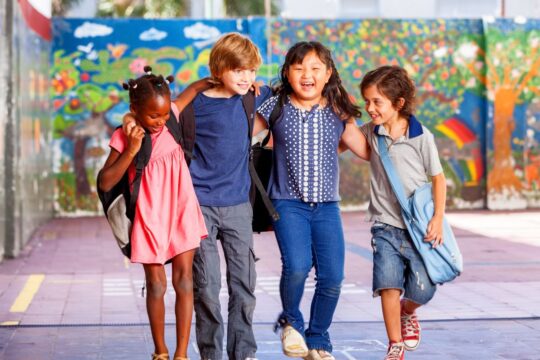The theory of multiple intelligences suggests that traditional measures of intelligence, like IQ tests, don’t fully capture the diverse ways people can be “smart.” Developed by Harvard professor Howard Gardner in 1983, this theory proposes that intelligence isn’t a single, unified ability but rather a collection of distinct intelligence types.
Gardner’s framework is especially popular in education because it provides a new way to approach learning. By recognizing and nurturing a variety of intellectual strengths, educators can help students succeed in ways that standardized tests may not measure.
The Eight Types of Multiple Intelligences
Gardner’s theory identifies eight primary types of intelligence. While a person may excel in one or two areas, everyone possesses all eight to some degree.
- Linguistic: This intelligence relates to a mastery of language, words, and communication. People with strong linguistic intelligence are skilled at writing, reading, storytelling, and public speaking.
- Logical-Mathematical: This involves the ability to use logic, reasoning, and numbers effectively. Individuals with this intelligence are good at problem-solving, identifying patterns, and scientific thinking.
- Bodily-Kinesthetic: This is the capacity to use one’s body skillfully to solve problems or create things. This intelligence is evident in dancers, athletes, surgeons, and craftspeople.
- Visual-Spatial: This involves the ability to perceive and manipulate the world visually. People with this strength are often good with puzzles, maps, art, and visual metaphors.
- Musical: This is the ability to recognize, create, and appreciate rhythm, tone, pitch, and melody. Individuals with musical intelligence are often good at playing instruments, composing, and understanding musical patterns.
- Interpersonal: This intelligence focuses on understanding and interacting with other people. People with strong interpersonal skills are empathetic, great communicators, and effective leaders.
- Intrapersonal: This involves self-awareness and the ability to understand one’s own feelings, motivations, and goals. This intelligence is crucial for reflection, self-regulation, and personal growth.
- Naturalistic: This is the capacity to recognize, categorize, and understand the natural world. This intelligence is often strong in botanists, zookeepers, and those who enjoy gardening or hiking.
How to Apply Multiple Intelligences in the Classroom
Incorporating multiple intelligences into your teaching can make lessons more engaging and accessible for all students.
- Assess Student Strengths: Use online or printable multiple intelligence assessment tools to help students understand their unique abilities.
- Diverse Book Reports: Offer alternatives to traditional book reports, like having students create a song about the book or build a diorama.
- Creative Writing: For linguistic learners, ask them to write a story or script based on the topic.
- Hands-On Learning: Use manipulatives in math, have students build a model with clay, or create a collage to engage bodily-kinesthetic intelligence.
- Visual Aids: Encourage “picture-smart” students to draw diagrams, illustrate a group project, or develop a PowerPoint presentation.
- Musical Connections: Have students create a rap song about their subject or find pieces of music that represent different concepts, such as a solid, liquid, and gas.
- Group Collaboration: Take advantage of interpersonal learners’ social energy through group work, class discussions, and peer teaching.
- Debate and Logic: Use debates to teach logical reasoning and rhetoric to students with strong logical-mathematical intelligence.
- Nature-Based Projects: Take the class outside, invite students to care for a classroom garden, or use natural items like flowers for math manipulatives to engage naturalistic learners.
- Personal Reflection: Give intrapersonal learners assignments that challenge them to make connections between their personal experiences and the class subject through journals, blogs, or essays.
- Performance and Role-Play: Allow bodily-kinesthetic students to act out a skit or physically simulate a scientific process.
- Student-Led Teaching: Let students with strong interpersonal skills teach the class or lead a discussion.
- Metacognitive Assignments: Encourage intrapersonal learners to think about their own learning styles and processes.
- Technology Integration: Use technology to have interpersonal learners interact with others via platforms like video conferencing or chat.
Don’t feel pressured to completely redesign your curriculum overnight! Start small by picking one or two intelligences you don’t normally use and find a way to incorporate them.
You’ve got important career goals — we have the graduate program to get you there. Check out our available graduate degree programs to advance your career today!




